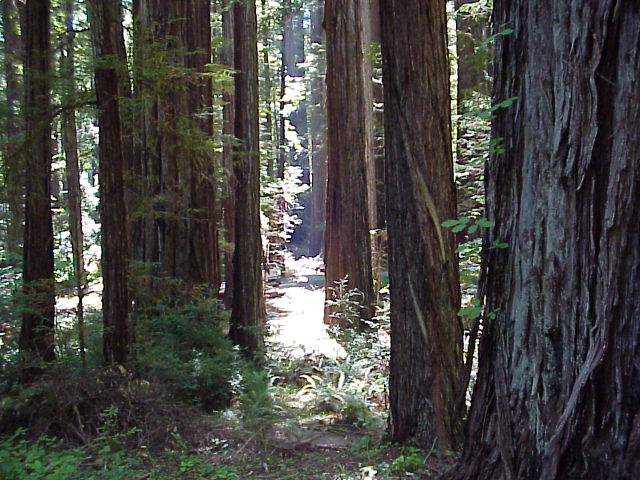
Coast redwood are the world's tallest living things. Some of them tower above 360 feet. The name, Sequoia sempervirens, is Latin for "ever living" - an appropriate name for these trees since many are 600 to 1200 years old and some have lived more than 2,000 years! In fact, since coast redwood often reproduces by root collar burl sprouting, the genetic material that comprises some trees may be thousands of years old.
Coast redwoods do not have a single taproot. Instead, they form a shallow network of relatively small roots that extend radically, up to a hundred feet from the base. The ends of the roots are fibrous, allowing them maximum surface area to obtain moisture and nutrients. If a flood buries the roots too deeply in silt, they have the ability to grow and explore their way upward toward more oxygenated soil. In addition to root collar burl sprouting, coast redwood also reproduces from seed. Flowering occurs in December and January with cones maturing over the spring and summer. In the autumn, the cones open on the trees and, on the average, 50 to 100 tiny seeds sprinkle out. Seedlings survive best in exposed mineral soil that often occurs as a result of fire, flood and uprooted trees.
Another species of redwood is the giant sequoia, or "big tree." They are found in a narrow strip about 200 miles long on the western slopes of the Sierra Nevada range at elevations between about 3000 and 8000 ft. It is the most massive of all living forms. The largest specimen, the General Sherman Tree in Sequoia National Park, is 275 ft. tall, 83 ft. in diameter at a point 4.5 ft. above ground level, and was estimated in the early 1990s to weigh about 2500 metric tons. Other trees range from 150 to 325 ft. in height, with diameters up to 30 ft. A count of annual rings on stumps has verified ages as great as 2300 years. Some living trees, however, are believed to be close to 4000 years old.